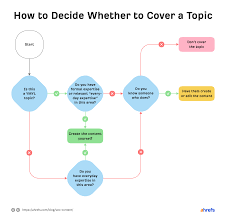Unlocking Success Online with Skilled SEO Marketing Experts
The Role of SEO Marketing Experts in Driving Online Success
In today’s digital landscape, the role of SEO marketing experts is more crucial than ever. Search Engine Optimization (SEO) has become a cornerstone of any successful online marketing strategy, and having the right experts to navigate this complex field can make all the difference in driving online success.
What Do SEO Marketing Experts Do?
SEO marketing experts are professionals who specialise in improving a website’s visibility on search engines like Google. Their primary goal is to increase organic traffic to a website by optimising its content, structure, and performance according to search engine algorithms.
These experts conduct in-depth keyword research, analyse website performance metrics, and implement on-page and off-page SEO strategies to improve a site’s ranking on search engine results pages (SERPs). They stay updated on the latest trends and algorithm changes to ensure that their strategies are effective and compliant with search engine guidelines.
The Benefits of Hiring SEO Marketing Experts
There are several benefits to hiring SEO marketing experts for your online business:
- Improved Visibility: By implementing effective SEO strategies, experts can help your website rank higher in search results, making it more visible to potential customers.
- Increased Traffic: Higher rankings lead to increased organic traffic, resulting in more opportunities for conversions and sales.
- Better User Experience: SEO experts focus on improving website usability and performance, creating a better experience for visitors.
- Long-Term Results: A well-executed SEO strategy can provide long-term benefits and sustainable growth for your online business.
Choosing the Right SEO Marketing Experts
When selecting SEO marketing experts for your business, it’s essential to consider their experience, expertise, and track record of success. Look for professionals who have a proven history of delivering results for clients in your industry and who stay abreast of industry trends and best practices.
Effective communication, transparency, and a collaborative approach are also key factors to consider when choosing an SEO marketing partner. Working closely with experts who understand your business goals and tailor their strategies accordingly can lead to a more successful partnership.
In Conclusion
SEO marketing experts play a vital role in driving online success for businesses looking to enhance their digital presence. By leveraging their expertise in search engine optimisation, businesses can improve visibility, attract more traffic, and ultimately achieve their online marketing goals. Investing in the right team of SEO experts can be the key to unlocking the full potential of your online business.
9 Essential Tips for SEO Marketing Experts: Mastering Trends, Content, and Engagement
- Understand the latest SEO trends and algorithm updates.
- Create high-quality and relevant content for your target audience.
- Optimize website structure and navigation for better user experience.
- Utilize proper keywords strategically throughout your content.
- Build quality backlinks from reputable websites in your industry.
- Regularly monitor and analyse website performance using tools like Google Analytics.
- Stay updated on best practices in on-page and off-page SEO techniques.
- Engage with your audience through social media platforms to drive traffic to your site.
- Continuously test and tweak your SEO strategies to improve results over time.
Understand the latest SEO trends and algorithm updates.
To excel in the competitive field of SEO marketing, it is crucial for experts to stay informed about the latest SEO trends and algorithm updates. By understanding and adapting to these changes, SEO marketing experts can ensure that their strategies remain effective and compliant with search engine guidelines. Keeping abreast of the evolving landscape of SEO not only allows professionals to anticipate shifts in search engine algorithms but also enables them to implement proactive measures that drive online success for businesses.
Create high-quality and relevant content for your target audience.
Creating high-quality and relevant content tailored to your target audience is a fundamental tip emphasised by SEO marketing experts. By crafting content that resonates with your audience’s interests and needs, you not only enhance user engagement but also improve your website’s visibility in search engine results. Quality content that provides value, answers questions, and addresses specific pain points can help establish your brand as an authority in your industry, driving organic traffic and boosting conversions. SEO experts understand the power of compelling content in attracting and retaining visitors, ultimately contributing to the overall success of your online presence.
Optimize website structure and navigation for better user experience.
To enhance user experience and improve search engine rankings, SEO marketing experts recommend optimising website structure and navigation. By organising content logically, implementing clear navigation menus, and ensuring easy access to information, websites can provide a seamless browsing experience for visitors. A well-structured site not only helps users find what they’re looking for quickly but also signals to search engines that the website is user-friendly and relevant. This approach not only boosts user engagement but also contributes to higher search engine visibility, making it a crucial aspect of effective SEO strategies.
Utilize proper keywords strategically throughout your content.
To maximise the effectiveness of your SEO marketing strategy, it is essential to strategically incorporate relevant keywords into your content. By utilising proper keywords thoughtfully and strategically throughout your website content, you can improve its visibility on search engine results pages. This practice not only helps search engines understand the relevance of your content but also enhances the user experience by providing valuable and targeted information to your audience. Proper keyword usage is a fundamental aspect of SEO marketing that can significantly impact your online presence and drive organic traffic to your website.
Build quality backlinks from reputable websites in your industry.
Building quality backlinks from reputable websites in your industry is a crucial tip recommended by SEO marketing experts. By acquiring backlinks from authoritative and relevant sources, you not only enhance your website’s credibility and trustworthiness in the eyes of search engines but also increase the likelihood of driving organic traffic to your site. These high-quality backlinks act as a vote of confidence for your content, signalling to search engines that your website is a valuable resource within your industry. Implementing this strategy can significantly boost your website’s search engine ranking and overall online visibility, making it an essential practice for any successful SEO campaign.
Regularly monitor and analyse website performance using tools like Google Analytics.
To maximise the effectiveness of SEO strategies, it is crucial for SEO marketing experts to regularly monitor and analyse website performance using tools such as Google Analytics. By tracking key metrics like traffic sources, user behaviour, and conversion rates, experts can gain valuable insights into the effectiveness of their SEO efforts. This data-driven approach allows them to identify areas for improvement, make informed decisions, and continuously optimise the website to enhance its visibility and drive online success.
Stay updated on best practices in on-page and off-page SEO techniques.
To excel as SEO marketing experts, it is crucial to stay updated on the best practices in on-page and off-page SEO techniques. By keeping abreast of the latest trends and algorithm updates, professionals can ensure that their strategies align with search engine guidelines and deliver optimal results for their clients. Implementing effective on-page strategies such as keyword optimisation and quality content creation, alongside off-page tactics like link building and social media engagement, can significantly enhance a website’s visibility and ranking on search engine results pages. Continuous learning and adaptation to evolving SEO practices are essential for staying ahead in the competitive digital landscape.
Engage with your audience through social media platforms to drive traffic to your site.
To maximise the impact of your SEO marketing efforts, it is crucial to engage with your audience on social media platforms. By actively interacting with users on platforms like Facebook, Instagram, and Twitter, you can build a loyal following and drive traffic to your website. Sharing valuable content, responding to comments and messages, and running targeted social media campaigns can all help increase brand visibility and attract visitors to your site. Engaging with your audience through social media not only enhances your online presence but also creates opportunities for meaningful connections and conversions.
Continuously test and tweak your SEO strategies to improve results over time.
To maximise the effectiveness of your SEO marketing efforts, it is crucial to continuously test and refine your strategies to enhance results over time. By monitoring the performance of various SEO tactics, analysing data, and making adjustments based on insights gained, SEO marketing experts can adapt to evolving search engine algorithms and user behaviours. This iterative approach not only improves the visibility and ranking of your website but also ensures that your online presence remains competitive and relevant in the ever-changing digital landscape.



